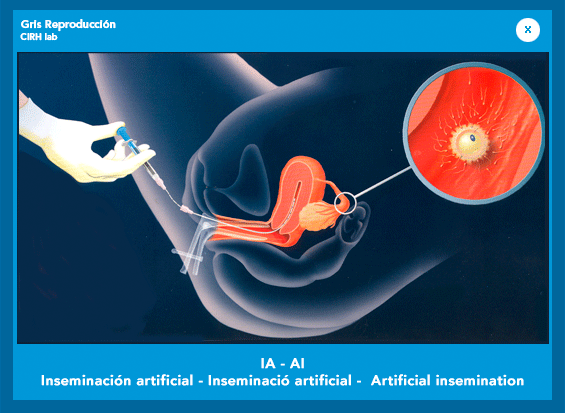Información legal:
Titular de la página web: Gris Reproducción SL
Propiedad Intelectual:
Todos los derechos de explotación están reservados. Queda prohibida la reproducción, retransmisión, copia, ce-sión o difusión total o parcial de su contenido sin autorización expresa y por escrito. Tampoco se autoriza:
- La PRESENTATION de una página del sitio web en una ventana que no pertenezca a Gris Reproducción SL por medio de "framing".
- La inserción de una imagen difundida en el sitio web en una página que no sea de Gris Reproducción SL mediante "in line linking".
- La extracción de elementos del sitio web causando perjuicio a Gris Reproducción SL, de conformidad con las disposiciones vigentes.
Garantías y Responsabilidades:
Gris Reproducción SL no asume la responsabilidad de las infracciones en que puedan incurrir los usuarios ni de los daños y perjuicios causados por la utilización de esta web, y se reserva el derecho de actualización y modificación de la información sin previo aviso.
Gris Reproducción SL no asume la responsabilidad del contenido, la veracidad y los errores en los enlaces a los que se puede acceder a través de la página web. La única finalidad de los enlaces consiste en proporcionar a los usuarios el acceso a una información que pueda ser de su interés.
Las anteriores condiciones se regirán por la normativa española.
08017 - Barcelona - Spain
Telephone: (+34) 93 280 65 35
Fax: (+34) 93 280 08 71
doctorgris@doctorgris.com


Artificial insemination has been used mainly as therapeutic in cases of male infertility. We distinguish two types of techniques: Artificial Insemination by Husband (AIH) and artificial insemination with donor semen (IAD)
The AIH is indicated for those couples who submit:
1. Male sterility:
- Anatomical: inability to deposit sperm in vagina
- Psychological: impotence
- Oligoastenoteratozoospermia mild (low concentration of sperm and / or altered morphology)
2. Female sterility:
- Cervical: a change in cervical mucus interaction/semen
- Endometriosis
- Ovulatory dysfunctions
3. Immunologic infertility: antisperm antibodies
4. Sterility of unknown origin
5. Sexual Transmitted Diseases -seminal-laundering-
The AID is indicated in the following cases:
- Women without male
- Azoospermia
- Genetic male abnormalities
- Dysfunction squirting
- Sexually transmitted diseases
By both techniques, it is possible to deposit sperm into the uterine cavity as close to the oviduct of women, reducing the distance that the sperm must travel to the oocyte and removing potential barriers.
Methodology of AI:
1. With a natural cycle or with ovarian stimulation: in the natural cycle of the patient, or by making a small stimulation of the ovaries with hormones to obtain adequate control of follicular growth and maturity (in a controlled manner to avoid multiple pregnancy).
2. Ultrasonographic monitoring of follicular growth and development of the endometrium: Around day 8 of cycle is the first view of ultrasound control follicle growth and this is repeated a few days later to observe the moment of ovulation and perform the insemination.
3. AI programming: the hormone HCG must be administered to induce ovulation within 36 hours.
4. The sample of semen preparation: It consists of separating the sperm, to concentrate and activate the fertilization ability of them. This is performed by density gradient centrifugation, using the latest innovations and culture media designed specifically. see photos

5. Insemination: Once the sample is ready we introduce sperm into the uterine cavity through a cannula. No anesthesia is necessary and is performed on an outpatient basis. see photos

6. Pregnancy test: a urine pregnancy test is performed 16-18 days after the insemination.
This technique provides a moderate rate of pregnancy so that only will be achieved in the most favorable conditions, that is, when the evidence in the study did not detect any substantial alteration or a factor of male infertility mild or moderate.
In the artificial insemination 90% of pregnancies occur in the first three cycles, so if you don’t get pregnant, we recommend no more attempts and to perform IVF treatment.
In summary:
With the artificial insemination by the male, in a well-regulated female, we are dealing with FSH, the follicular phase inducing ovulation with human chorionic gonadotropin (hCG) and adding progesterone to fill the luteal phase, so that any type of ovulatory dysfunction will be covered.
Furthermore, we select the sperm and remove the barrier to be intra-uterine cervical, so we help the cases of mild male sub fertility, cervical sterility and even the hypothetical case of difficulty of sperm transport.
- A better pregnancy rate is obtained in stimulated cycles.
- Less emotional and financial commitment
- Absolutely painless
- Fully ambulatory, is practiced in our exploratory room.
- Can not confirm fertilization
- Risk of multiple pregnancy in the case of developing more than one follicle
- It can not be used if the tubes are blocked or absent.
Technically will be performed in the same way that the AIH.
Patients area | First visit | Diagnostic tests | Psychological support | How to visit | Frequently asked questions | Oocyte donation | Sperm donation |
Documents | News | Legal notice | Credits: Deumonforte


